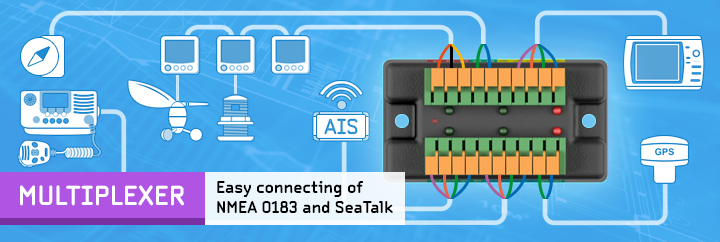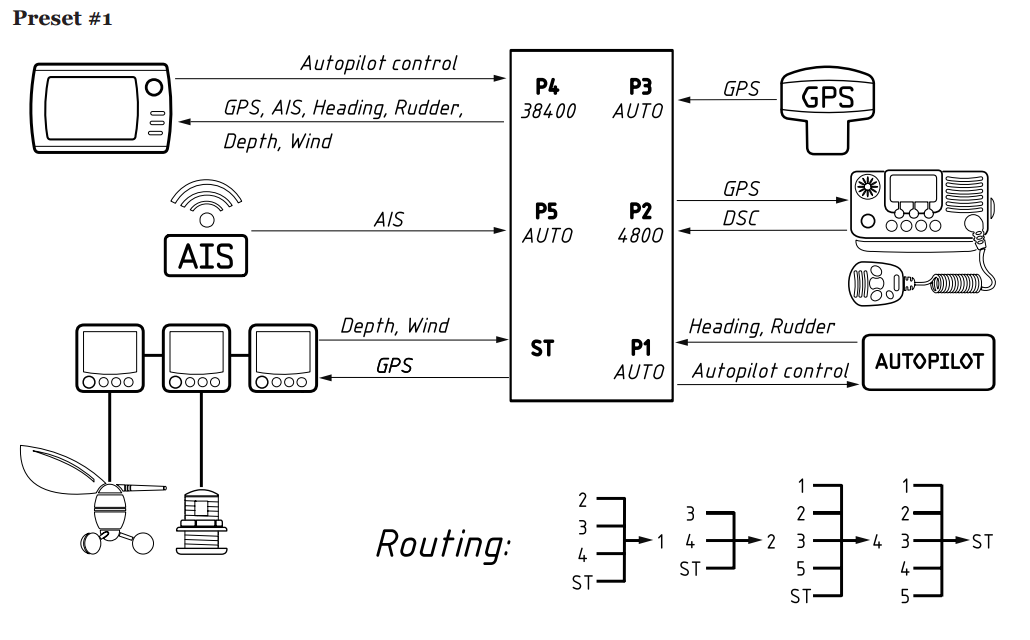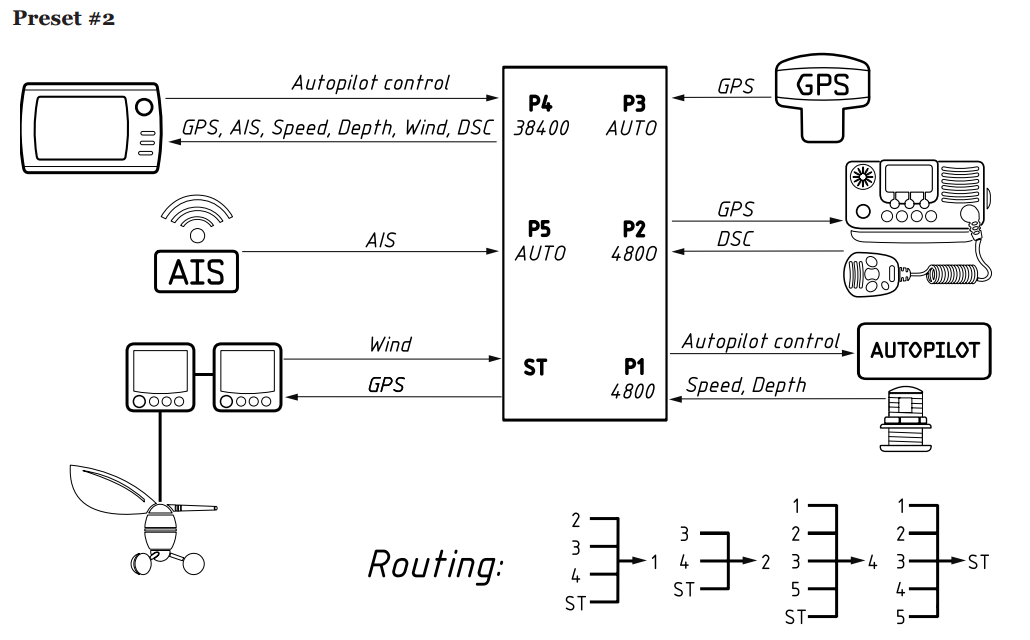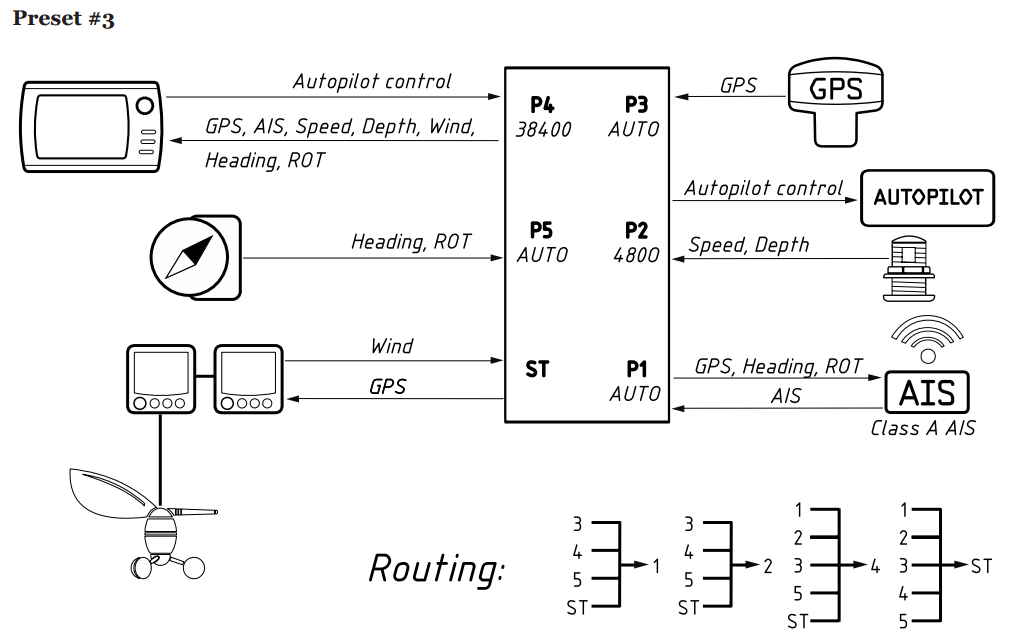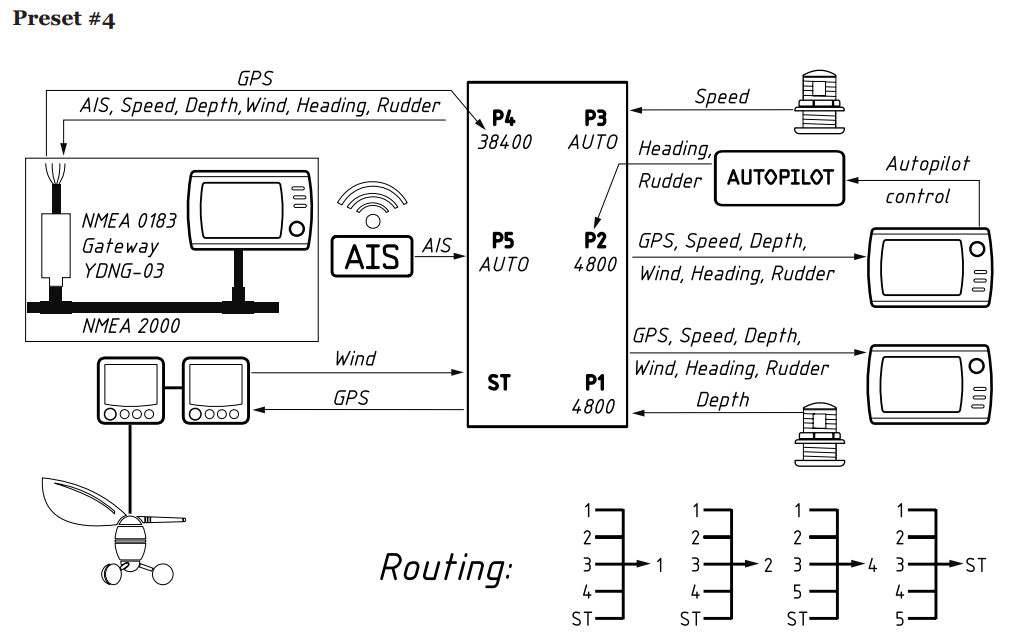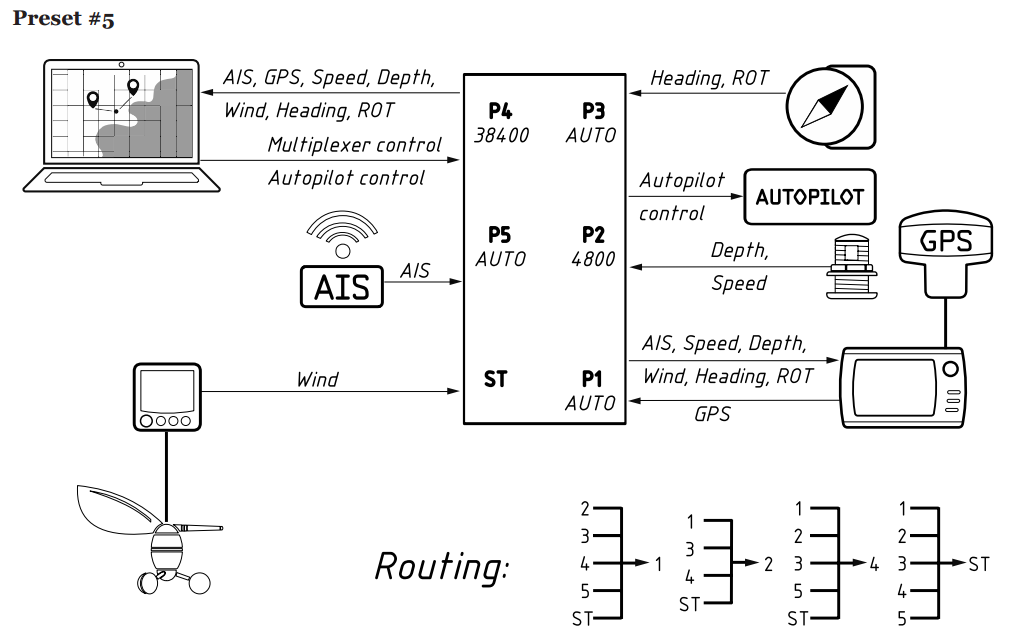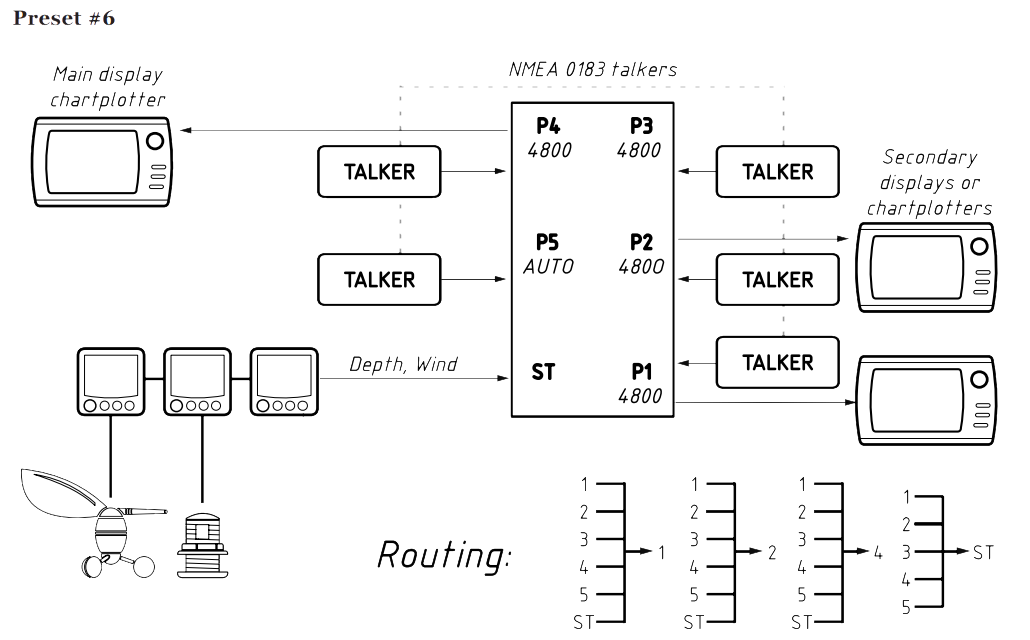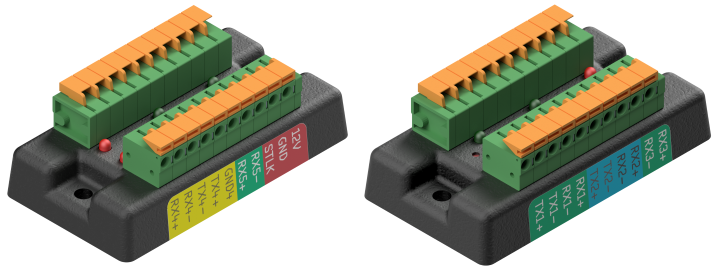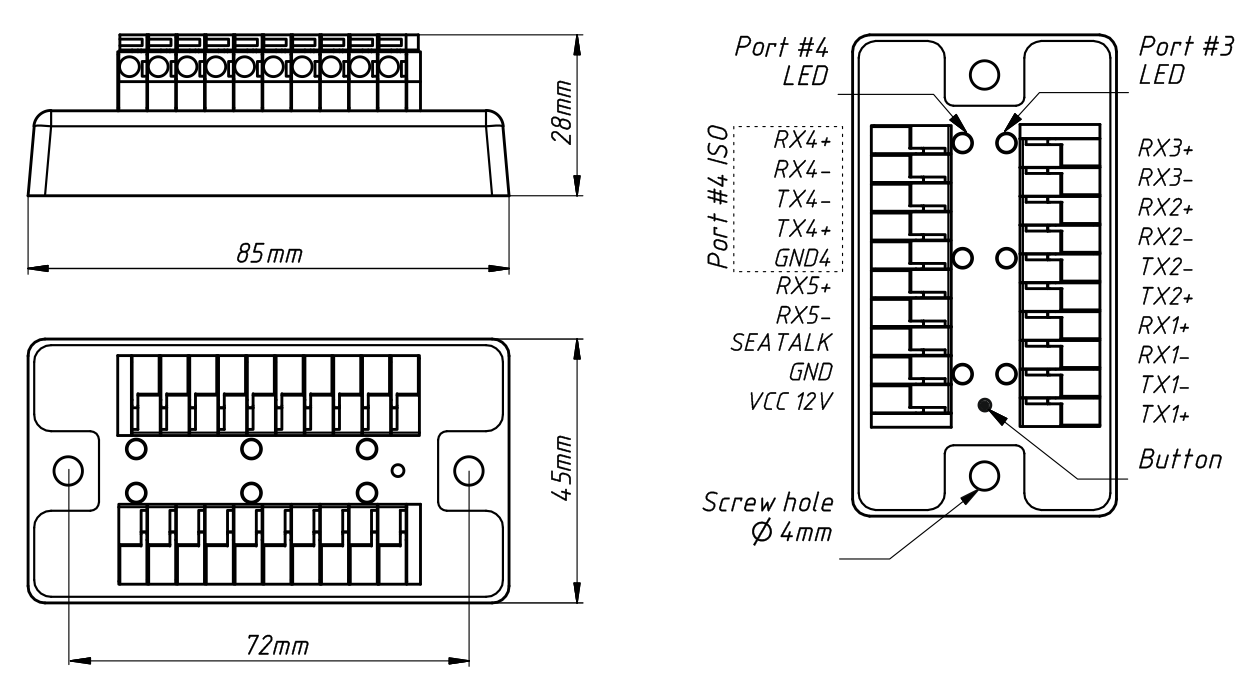NMEA 0183 Multiplexer YDNM-02
Smart multiplexer with five NMEA 0183 ports and one SeaTalk port, auto detection of port speed and easy configuration with a click of a button! And, of course, it has flexible filters, routing rules, and supports firmware updates.
The underlying idea was to create simplest multiplexer in the world. In our lab, the project was called "Simple Multiplexer", but later we added a lot of features and removed the word "Simple". Nonetheless, we are sure that it is still the easiest to install. Instead of a laptop and software, you'll only need a paperclip.
Pictures 1-6. Configuration presets (use slider)
The Multiplexer has six configuration presets with different port speeds and routing schemes. Presets can be selected by pressing a hidden button. Ports can be configured to auto-detect the speed of connected equipment.
In Preset #1 (see Picture 1), 3 of the 5 ports are configured for "AUTO" speed. This means that you need not worry about the speed of the NMEA 0183 equipment that you connect. Port #4 in the Preset #1 is configured for 4800 bps, but you need not worry that it will be flooded by AIS messages from Port #5, because according the routing scheme, it receives data from ports #3, #4 and SeaTalk.
Ports can be routed to themselves, which allows multiplexing of data from SeaTalk and 5 different NMEA 0183 talkers (see Preset #6 on Picture 6) and sending them to 3 or more different listeners (multiple listeners can be connected to a talker, but a listener can receives data from only one talker).
Picture 7. NMEA 0183 Multiplexer YDNM-02 (click to enlarge)
If you find no suitable preset, you can change any setting of any preset: speed, routing, data filters or tunnel mode. This can be done with a command sent to any port of the Multiplexer. In the settings you can also lock the button to prevent incidental switching of the preset by incompetent crew.
Product features:
- 5 x NMEA 0183 ports (2 x TX/RX, 1 x TX/RX with galvanic isolation 2500 VRMS, 2 x RX only);
- 1 x SeaTalk port (multiple devices can be connected);
- both "single ended" (RS-232) and "differential" (RS-422) NMEA 0183 connections are supported;
- NMEA ports can be configured for any speed from 300 to 115200 bps, and to AUTO speed;
- bi-directional data conversion between SeaTalk and NMEA 0183 with autopilot support;
- individual filters on all ports (by datagram number, sentence formatter or talker ID) for incoming and outgoing messages;
- individual routing rules for all ports, routing of NMEA 0183 ports to themselves is supported;
- "tunnel" mode to connect old, non-standard and Navtex equipment;
- firmware updates from the serial port are supported.
Order now and get our special offer: free world wide delivery!
When deciding where to install the Multiplexer, choose a dry mounting location. Despite the fact that the Multiplexer case is waterproof, the terminals are open and seawater can cause a short circuit. The Multiplexer can be fixed in any orientation using the two screw holes (4 mm diameter, 72 mm between centers) and the screws supplied.
Picture 8. Drawing of NMEA 0183 Multiplexer YDNM-02 (see photos)
For additional technical details, please see the User Guide and FAQ.
